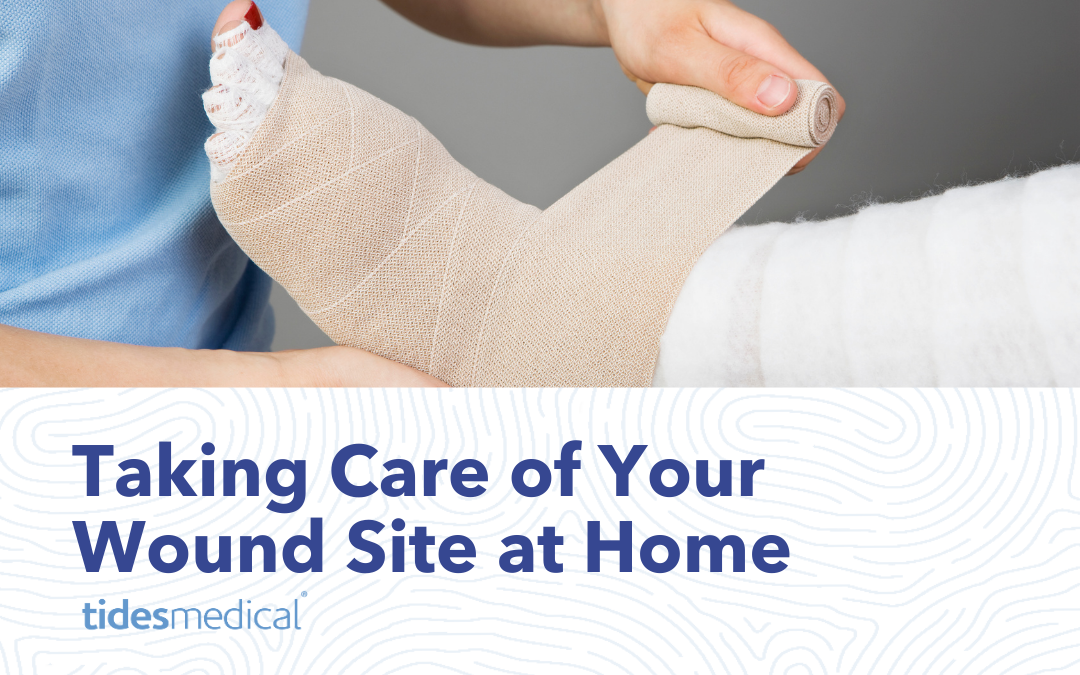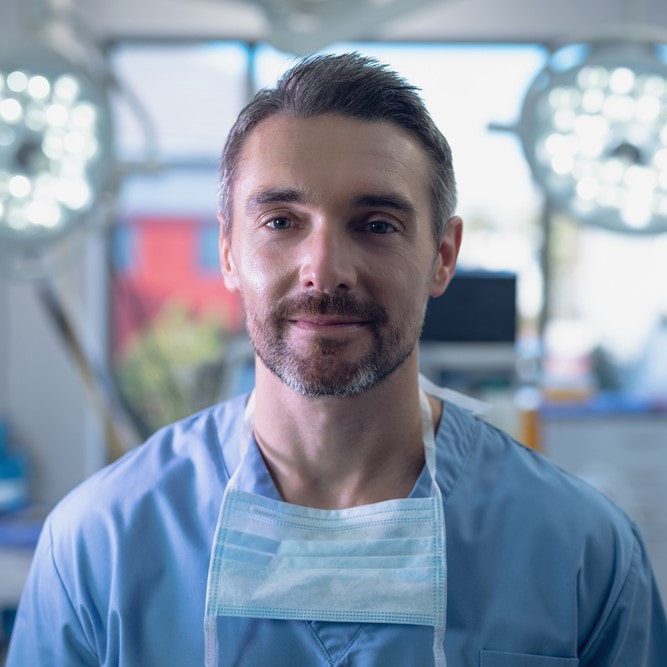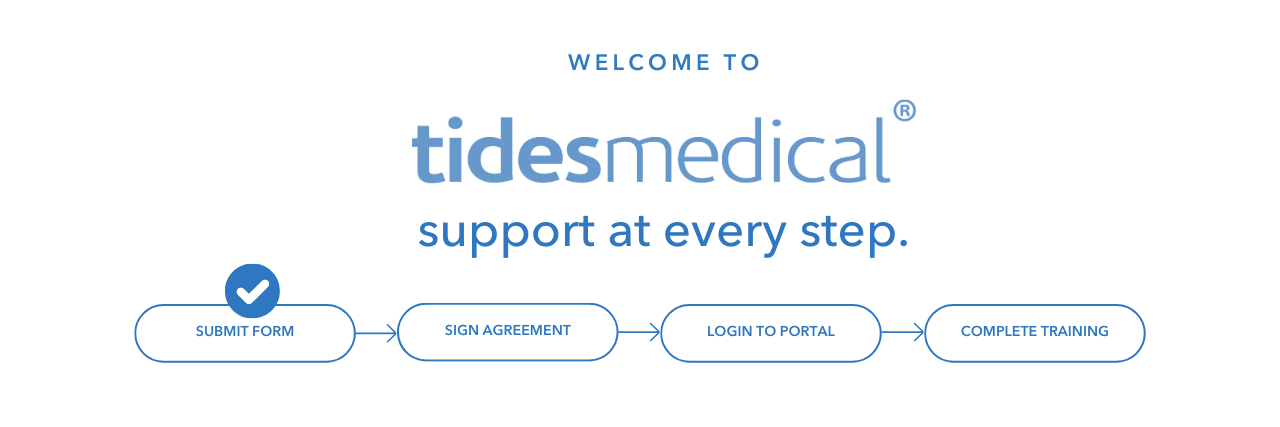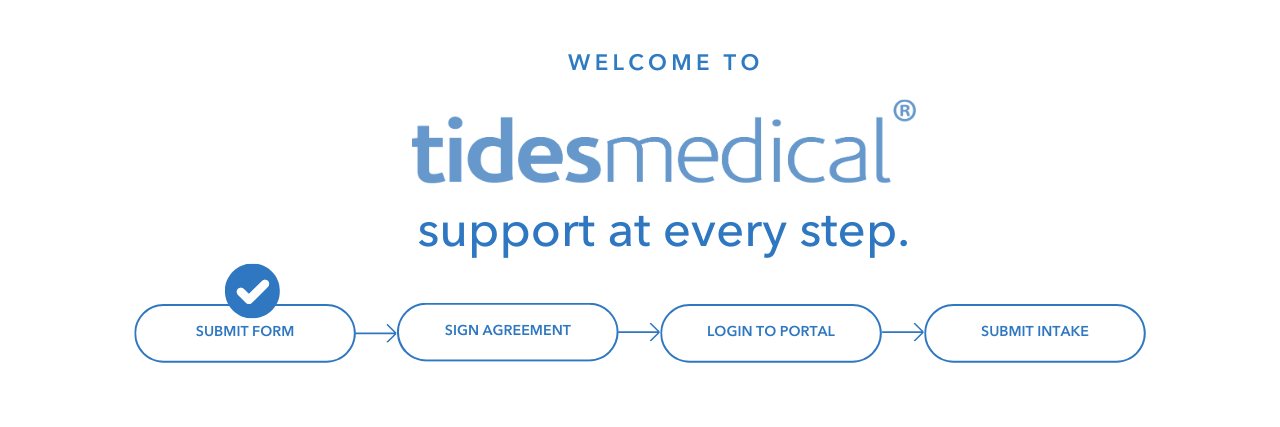The purpose of this article is to educate end users of the use of amniotic tissue products in wound care and provide physicians with additional resources to provide patients guidance on wound care. The contents of this article will discuss Tides Medical wound care recommendations and best practices. NOTE: It is crucial that patients comply with all written and verbal instructions provided directly from your care provider. If you have any questions or concerns about your wound care needs, please contact your physician directly.
As with any medical procedure, both outpatient and inpatient, the aftercare procedures are crucial to the overall healing process. There are many risks associated with improper wound care including but not limited to wound infection, infection spreading to other areas of the body or tissue cells, improper healing, scarring, excessive bleeding, graft failure, and more. It is very important that you understand what your wound covering is, how to handle the wound site, when to expect progress, and when to schedule your next application or appointment. Let’s dive in!
About your wound covering
Tides Medical wound coverings are advanced amniotic tissue products regulated by the FDA. The amniotic tissue covering will frequently be covered with a non-stick dressing and bandage by your provider. For a visual of the application process, check out our post “How to Apply A Wound Graft”. Weekly applications are recommended for best outcomes. Best practice is to ensure patients have their follow up appointment scheduled for the following week, prior to them leaving the site of care. This allows physicians to monitor the wound site and provides the opportunity for additional application as necessary.
Early Care – Artacent Amniotic Tissue Products & Procedures
Patients should plan to take it easy and rest for the first several weeks. Even if you are feeling up to it, too much activity can lead to stretching of the wound site, or sweat and dirt entering the bandage and wound area. Keeping your wound in a clean environment is crucial for proper wound care. Avoid pressure to the wound area and avoid rubbing of the wound covering for at least 3-4 weeks. Patients can expect some light bleeding, swelling, bruising, redness, and discomfort from the debridement process of the wound site. Physicians may provide instructions for pain management on a patient by patient basis.
Do not touch or remove the bandage unless instructed to by your provider. It is important to keep the bandage dry, which may require accommodations for bathing. A sponge bath is recommended to avoid getting bandage and wound site wet. If your bandage is damaged or comes off, contact your provider as soon as possible.
Your Next Appointment
The patient and provider should discuss the removal of bandage before the next appointment. In some cases, the dressing can be removed prior to the appointment. If permitted, after the dressing and bandage are removed, the wound site area can be washed with soap and water. Be sure to always dry the wound with surgical gauze or a clean washcloth. (NOTE: if the dressing or bandage become stuck and are difficult to remove do NOT pull on them. You can wet them with warm water (Do NOT soak) and gently lift off the bandage of the wound gently, try not to disturb the amniotic tissue covering.)
As mentioned above, best practice is to have a follow up appointment the week following the application. Be sure to check with your physician on what progress they expect to see and what the ideal plan is for the next appointment.
When To Expect To See Progress
Every patient’s case is unique. Progess is best noted with the appropriate level of aftercare, there are certain elements that can cause failure of the skin substitutes. Also be mindful that each person recovers at different rates and certain areas of the body take longer to recover than others. Typically, your wound site should recover within 3-4 weeks. If recovery is not occurring, an additional skin substitute application may be necessary. Be sure to attend all follow up appointments and call with questions for your physician as needed. Keep a close eye out for any changes to the wound site and call your physician if you have increased pain, increased swelling, any warmth, or redness beyond what is expected from debridement, or other signs of infection.
For more information on amniotic tissue products and application, visit our website or contact Tides Medical. If you are a physician interested in working with us, we would love the opportunity to provide more information.



 Marc Stemler, Ph.D.,
Marc Stemler, Ph.D.,  Mora Melican, Ph.D., VP of Operations, Research & Development
Mora Melican, Ph.D., VP of Operations, Research & Development LESA CATALON,
LESA CATALON, DAVID CASTILLE,
DAVID CASTILLE,




 Dr. Thomas E. Serena MD FACS FACHM MAPWCA
Dr. Thomas E. Serena MD FACS FACHM MAPWCA JOSH WILLETT,
JOSH WILLETT, JEFF MONTGOMERY,
JEFF MONTGOMERY, MIKE RIDDLE,
MIKE RIDDLE, BENJAMIN KIMBALL,
BENJAMIN KIMBALL, DOUG PAYNE,
DOUG PAYNE, JOE SPELL,
CEO
JOE SPELL,
CEO


